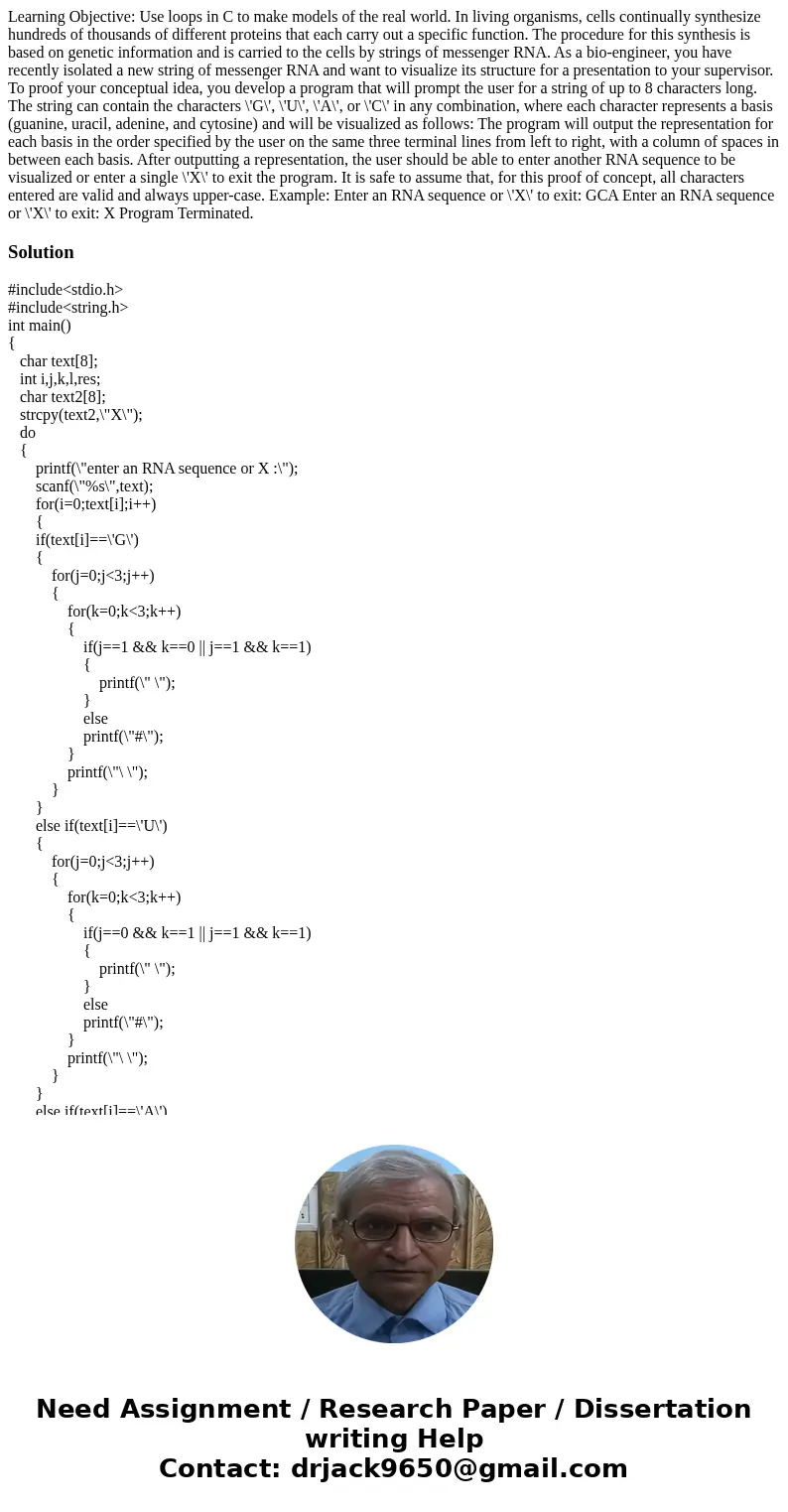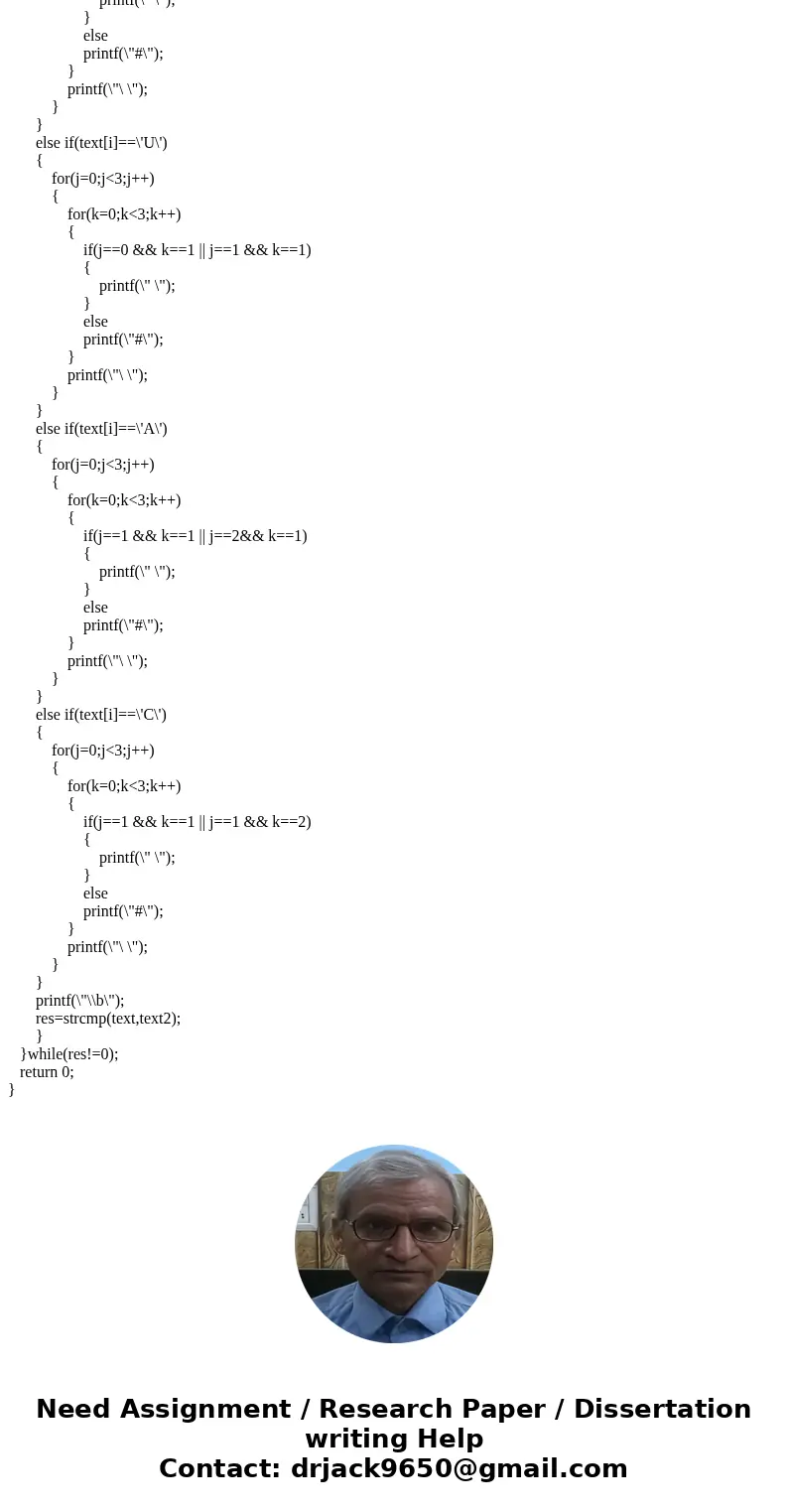Learning Objective Use loops in C to make models of the real
Solution
#include<stdio.h>
#include<string.h>
int main()
{
char text[8];
int i,j,k,l,res;
char text2[8];
strcpy(text2,\"X\");
do
{
printf(\"enter an RNA sequence or X :\");
scanf(\"%s\",text);
for(i=0;text[i];i++)
{
if(text[i]==\'G\')
{
for(j=0;j<3;j++)
{
for(k=0;k<3;k++)
{
if(j==1 && k==0 || j==1 && k==1)
{
printf(\" \");
}
else
printf(\"#\");
}
printf(\"\ \");
}
}
else if(text[i]==\'U\')
{
for(j=0;j<3;j++)
{
for(k=0;k<3;k++)
{
if(j==0 && k==1 || j==1 && k==1)
{
printf(\" \");
}
else
printf(\"#\");
}
printf(\"\ \");
}
}
else if(text[i]==\'A\')
{
for(j=0;j<3;j++)
{
for(k=0;k<3;k++)
{
if(j==1 && k==1 || j==2&& k==1)
{
printf(\" \");
}
else
printf(\"#\");
}
printf(\"\ \");
}
}
else if(text[i]==\'C\')
{
for(j=0;j<3;j++)
{
for(k=0;k<3;k++)
{
if(j==1 && k==1 || j==1 && k==2)
{
printf(\" \");
}
else
printf(\"#\");
}
printf(\"\ \");
}
}
printf(\"\\b\");
res=strcmp(text,text2);
}
}while(res!=0);
return 0;
}


 Homework Sourse
Homework Sourse